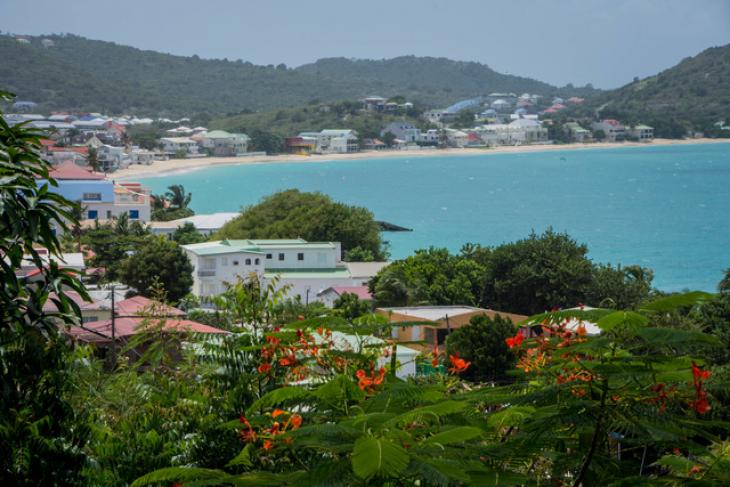
With proper planning and careful planting, your Caribbean home can have stunning gardens full of sweet-smelling shrubs and shade-giving palms.
For a resplendent year-round array of stunning texture and colour, choose plants that have a range of heights such as trees, scrubs and herbaceous ground cover with climbing plants helping to tie these all together.
One of the favourite Caribbean flowers is Jasmine, for the sweet aromatic nectar inside – in most islands the bloom is bright red flower with glossy foliage, although it is often found in pink, orange or yellow. Flowering throughout the year, Jasmine adds an evocative scent at sunset and offer alluring colours that can be enjoyed all year long.
Tropical gardensare colour-filled, fragrant and visually magnificent and, by rights, should always have orchids at their heart. There are more than 25,000 documented species of orchids in the Caribbean with several hundred native to the Caribbean islands. Though they are often considered a little high maintenance, if they are planted and positioned with care they really only need watering 5-12 days or so – anymore will kill your orchid.
Add hibiscus for its lovely and attractive foliage and blooms – a must in any tropical garden. Not only can you pick the flower for water displays, but you can also leave it to dry out and use it to make a delicious herbal tea infusion.
Fill any gaps with cute yellow allamanda (otherwise known as yellow bell, golden trumpet and buttercup) - a popular ornamental plant with a soft and fruity scent. As a cultivated wild flower, the allamanda grows readily and easily without watering or pruning. Similarly as low maintenance is the bougainvillea: a strong, robust flowering bush can be seen growing wild in a variety of colours including red, pink, yellow, orange and lilac. Bougainvillea is actually a vine with very thick branches and they make beautiful decoration for inside the home and even on balconies.
At the other end of the scale, is the beautiful heliconia, which comes in a variety of species and size. Fully grown, some don’t some will reach over 25 feet in height, while others will struggle to exceed 2ft tall. Famous for their brilliant array of colours that last all year long; pink, red, yellow, green, white and orange, heliconias need to have plenty of water, light and space.
Palms are extremely useful for given a garden shade and privacy and the coconut is found all over the Caribbean islands. There are actually two different groups of the coconut palm: niukafa and niuvai. The niukafa has a more angular-shaped fruit, with a thick husk and thin flesh. The niuvai is oppositely adorned with a thin husk and thick flesh, but is spherical in shape. Set aside trees husks for use in compost. Another tropical garden favourite is the crab’s claw (sometimes referred to as the wild banana): a striking plant with paddle-shaped leaves that have red-orangeflower holders, called bracts, that look like crab claws, hence the name! There are more than 40 species in the Caribbean area, with different sized bracts and varying colours of orange, red-orange and yellow – a great plant to add vivid colour. Though it originates from South Africa, many Caribbean gardens have bird of paradise growing naturally - plants have a large white bloom with a hint of a blue tinge and grows up to 15 feet.
Use raised decking, paved patios and terraces, balconies and tiered garden areas to give your tropical garden varied levels for added interest. Water features, a pool, a hot tub, or outside bar and kitchen area are all commonly found in beautifully landscaped Caribbean gardens, which also often have beautifully-laid-out dining rooms and lounge spaces al fresco.
[BOX OUT]
Top Tips for Designing a Caribbean Garden
- Create pathways that aren’t a tight squeeze: ideally, allow enough room for two people to walk side-by-side. Keep in mind that the taller the plantings or structures that flank your walkway, the wider the path needs to be.
- Outdoor steps and stairways should ascend gently; otherwise, they are liable to seem daunting, especially in a tropical climate where steps can be slippery. A rise of 6 inches or less are the most comfortable. Landings should be at least as deep as the stairs are wide.
- Create interesting levels for outdoor entertaining - patios and decks are perfect spaces. Plan for enough room to accommodate dining and mingling by considering how many guests you intend to host at once and allowing for at least 4 square feet of space per person.
- Check paving regularly to ensure it is providing secure footing. Avoid slick surfaces or loosely set pavers that wobble and any materials like polished granite or smooth outdoor tile that will become dangerously slippery when wet and humid.
- Leave plenty of headroom under archways, arbours, and pergolas – 7ft is a good minimum to work to, as there are likely to be trailing plants growing over the structure
- Give your plants room to grow and ignore the temptation to plant a dense, full landscape right away as this will become too crowded quite quickly.
- Place any plants more than 30 to 36 inches tall at least 2 to 3 feet back from walkway and patio edges; otherwise, these spaces may feel unduly cramped and crowded. Avoid planting thorny too close to paths.
- Resist the temptation to recreate a British-style lawn in the Caribbean: it’s costly, labour intensive and uses lots of water (often a precious commodity). Stick to native gardens full of local species and styles.
- While flowers are a highly attractive attribute, many plants offer more than just blooms. Look past the flowers and use foliage, fruit, and bark for year-long colour, form, and texture – palms can look stunning in a simple garden, where the trees themselves are the stars of the show.
- Be sure to check the rules and regulations regarding major works to your garden – don’t be tempted to dismiss building codes for outdoor structures and also take the time to consult your neighbours of any changes that may affect them.
Be sure to check the rules and regulations regarding major works to your garden – don’t be tempted to dismiss building codes for outdoor structures and also take the time to consult your neighbours of any changes that may affect them.

